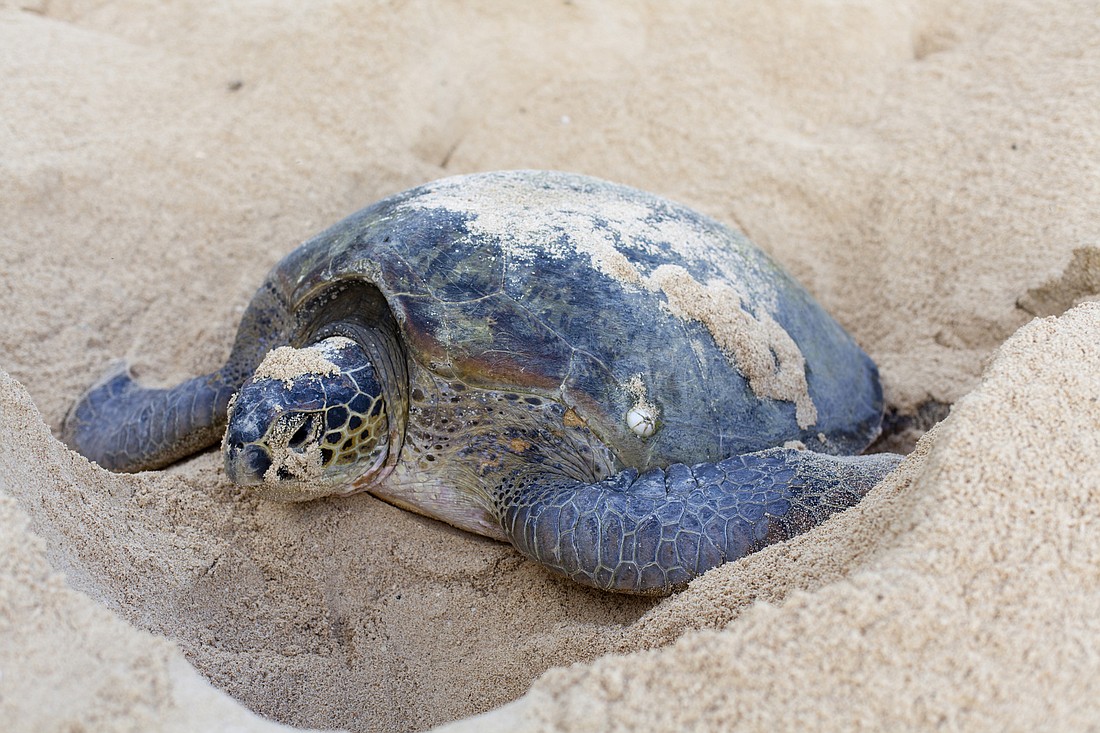- April 26, 2024
-
-
Loading

Loading

By: Volusia County Community Information
Two months into nesting season, a record-breaking 1,106 sea turtle nests have already been deposited on Volusia County managed beaches. Nearly half of them are in New Smyrna Beach.
In a typical year, about 500 sea turtle nests are laid nests on Volusia County’s beaches between May 1 and Oct. 1. That number increased to 984 in 2019, then dropped a bit to 902 in 2020 and 780 in 2021 before climbing sharply this year. Similar trends are being observed on other nesting beaches in the state.
As the nests are beginning to hatch, thousands of hatchling sea turtles will make their way to the ocean, an uncertain trek that can be fraught with perils, including disorienting lights from beachfront homes, as well as trash and holes left by beachgoers.
Volusia County staff and volunteers are extremely busy marking and monitoring nests, but they need the public’s help in ensuring a safe passage from nests to the ocean.
“We ask beachgoers to make sure the beach is dark, clean and flat at night so hatchlings can find their way offshore to the floating sargassum seaweed where they will spend the first portion of their lives,” said Jennifer Winters, Volusia County’s protected species manager.
The busy nesting season will lead to a busy washback season as many of the young turtles will be washed back to shore when summer storms send seaweed hurtling to the beaches.
The tiny turtles blend in with the seaweed, making them difficult to spot, Winters noted. Tragically they do not have the energy to make it back offshore without help, and they may die of dehydration or predation if they are left on the beach.
“If you find a washback or hatchling on the beach that is in imminent danger, do not put it back in the ocean,” Winters said. “Instead, contact Beach Safety for further instruction. These animals are often exhausted and can barely lift their heads to breathe. Holding them in water or putting them in the ocean can be fatal.”
She encourages people to follow these tips if they find a washback sea turtle:
Keep the turtle in a quiet, dry, shaded area — even if you think it’s dead. Staff from Beach Safety or a partner organization will coordinate with you to collect the turtle.
Washbacks are brought to the Marine Science Center, where they are treated and returned to the ocean by boat when they are strong enough to swim.
Volusia County’s Environmental Management Division has trained a team of Washback Watchers, who comb the beach each day as fresh seaweed washes in during washback season, which lasts from August through November. If you would like to be placed on the list for next year’s training classes, visit www.volusiaseaturtles.org.
For more information on nesting numbers, how to get involved and what you can do to help, visit www.volusiaseaturtles.org.